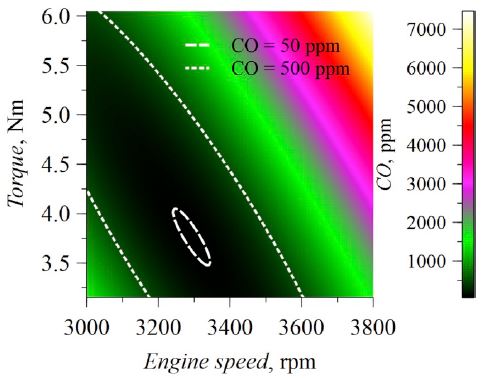El estudio presenta el desarrollo de mapas de emisiones de CO, O2, CO2, NO, NO2, NOx para un motor diésel impulsado por diésel y mezclas de combustible diésel-biodiésel. Los experimentos se llevaron a cabo en un motor de encendido por compresión de un solo cilindro, cuatro tiempos y refrigeración por aire, cubriendo nueve condiciones experimentales correpondientes a un torque alto, medio y bajo y niveles de velocidad del motor.
ABSTRACT: Diesel engines applications cover a broad spectrum, ranging from vehicles that transport passengers and move goods to specialized vehicles and equipment used in the construction and agriculture industries. However, diesel engines are a significant source of pollutant emissions that contribute to poor air quality, negative human health impacts, and climate change. This experimental case study develops emission maps based on statistical models for a single-cylinder, fourstroke, air-cooled diesel engine as a function of torque and engine speed. The tested fuels were 100% diesel (B0), and blends with 5% (B5) and 10% (B10) biodiesel originating from African oil palm (Elaeis guineensis). The study explores the individual contributions of NO and NO2 to NOx and discusses the correlation between CO and O2 emission maps. The statistical models of CO, CO2, and O2 feature R2 adjusted values greater than 0.8, while the models of NO and NO2 show R2.
A continuación puede acceder a la versión completa del producto de investigación: Case Studies in Thermal Engineering 19 (2020) 100613. El artículo original se encuentra publicado en la revista Case Studies in Thermal Engineering Vol. 19 (2020): Science Direct.

